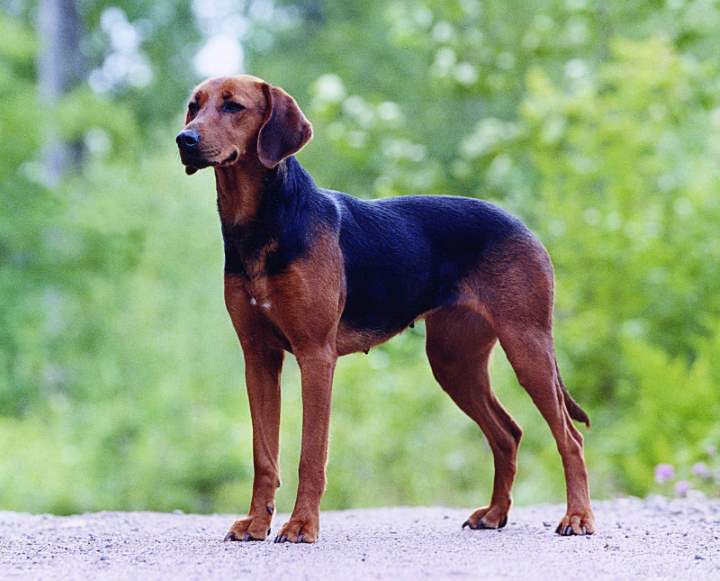The Schillerstövare, like the Hamiltonstövare, was named after its creator, although it also derives from East European hounds that came to Sweden in the 17th and 18th century with soldiers returning from war.

The Schillerstövare evolved in the West Gothia part of Sweden during the turn of the 20th century. A young farmer, Per Schiller, (1858–92) managed in only a few years to establish a strain of hounds particularly well known for their ability to go after foxes. Their breeder tragically died of pneumonia on New Year's Eve 1892, when he was only 34 years old. His hounds were named Schillerstövare in 1907, and were proclaimed to be Sweden's first native dog breed.
The breed has an even and calm temperament and is easy to train. It can be a pleasant family dog although it is mostly kept as a hunting dog. The Schillerstövare is homogenous, stable in both looks and working ability and a very thorough and keen tracker. It is still considered by many to be the best hound for hunting fox and it is highly appreciated for its most powerful, clean voice.
Appearance and size
The Schillerstövare is strong but elegantly built. The body is rectangular and should give the impression of speed and endurance. It must be well angulated and well made for maximum strength to pursue prey during a long hunting season in hard winter climate.
The coat is smooth and glossy and the colour is a very rich golden tan with a clearly defined jet-black mantel. Very small white markings on the toes and chest are permissible.
Ideal height for males is 57 cm, with an accepted variation from 53 to 61 cm. The ideal height for females is 53 cm with an accepted variation from 49 to 57 cm.
Breed registration statistics
Below you can find the registration statistics for the Schillerstövare in the Nordic countries from 1990 onwards.
| | Sweden | Denmark | Finland | Iceland | Norway |
|---|
| 2015 |
142 |
0 |
0 |
0 |
5 |
|---|
| 2010 |
83 |
0 |
2 |
0 |
0 |
|---|
| 2005 |
80 |
0 |
6 |
0 |
7 |
|---|
| 2000 |
164 |
0 |
8 |
0 |
3 |
|---|
| 1995 |
255 |
0 |
0 |
0 |
33 |
|---|
| 1990 |
335 |
0 |
0 |
0 |
47 |
|---|